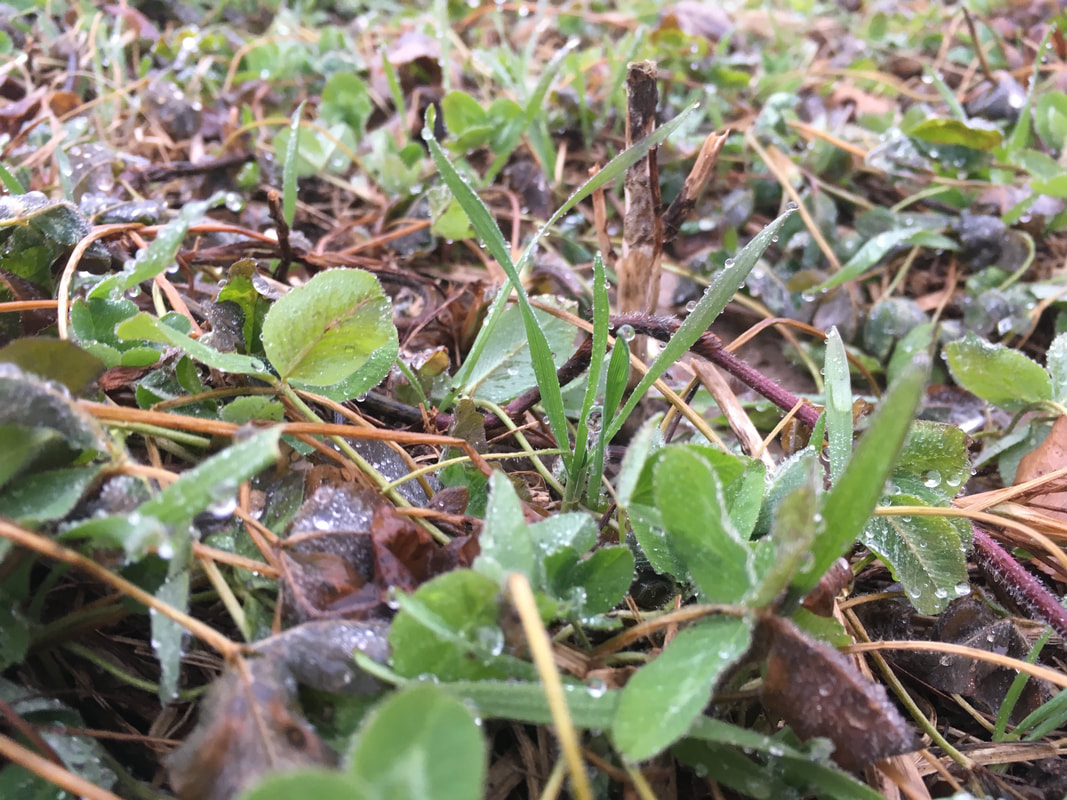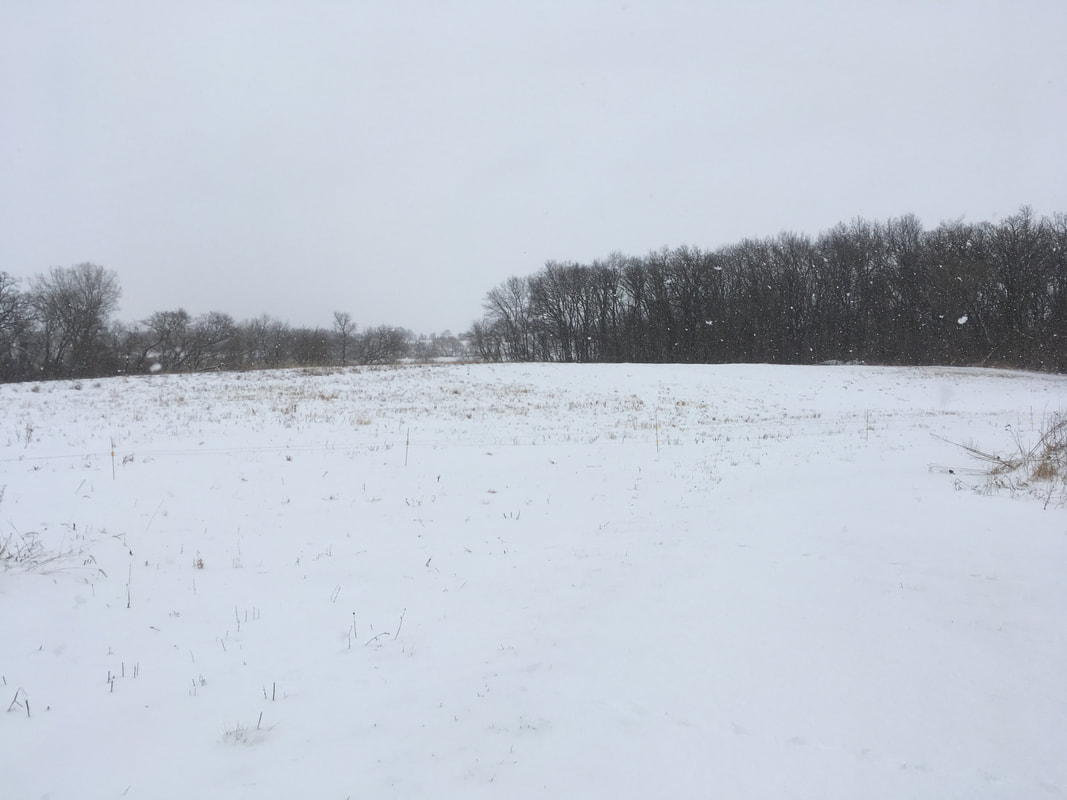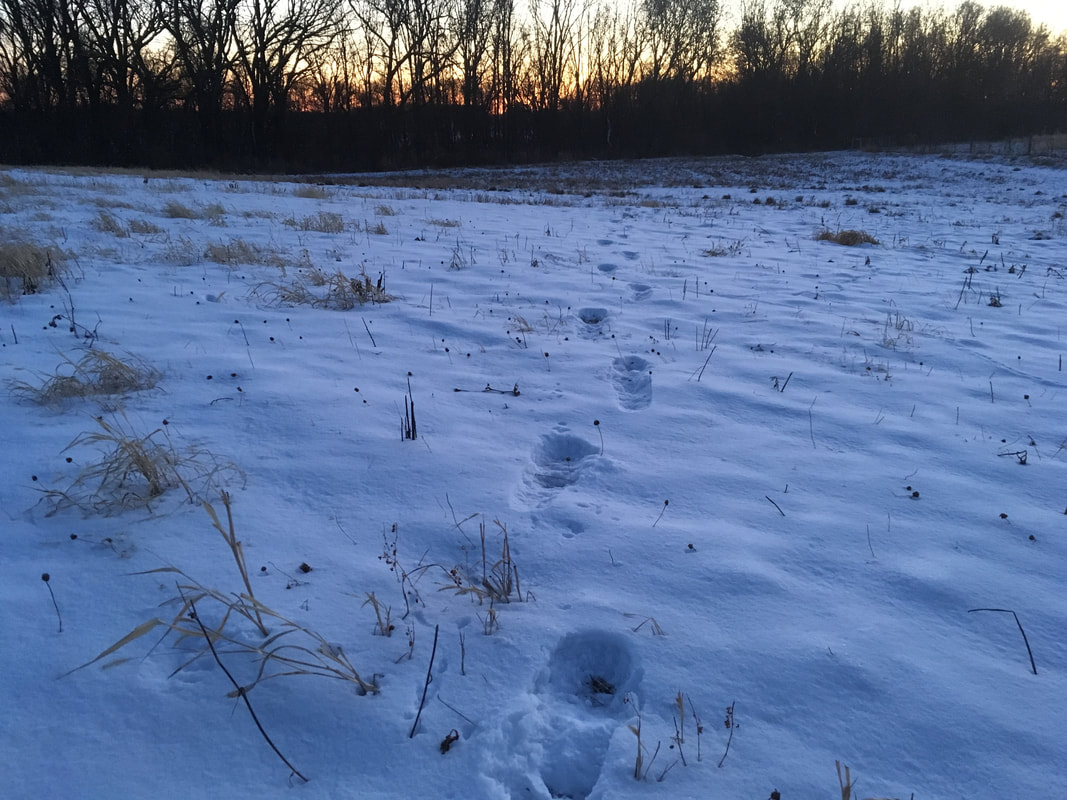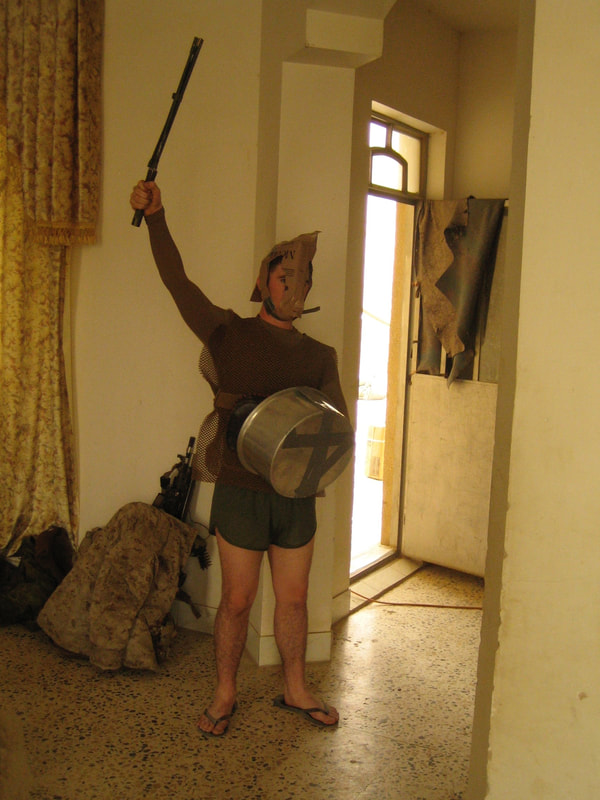|
If you're in the Dane County area and would like to see the farm in full swing, join us for an evening farm tour on July 17th at 6 PM. Details Here.
0 Comments
Regenerative Agriculture Principles Parallel Leadership Lessons for Engaging Complex Problems2/3/2023 I don't write much here these days because I'm immersed in my Leadership Coaching and Consulting business. If that sounds light years away from raising crops and hogs, it's not. I've discovered several parallels between practicing truly regenerative agriculture and helping sustainability leaders engage our most complex problems.
Here's the short list: 1. Think in Systems: Weeds -both literal and metaphorical- tell you something. They’re a product of your environment, but also a product of how you interact with it. Killing them isn’t likely to change the conditions that brought them there in the first place. If you keep fighting the same problem year after year, it’s not your tools, techniques, or technology that need to change–it’s your understanding of the entire system. Two quick rules for systems thinking: A. The system isn’t broken. It’s doing what it’s designed to do. Systems give results. Want to know what the system does -look at the results -all of them. B. There are no side-effects. The notion of a side effect is a flaw in your thinking -a failure to see the system for all that it does. There are only effects. Accept that. We are all part of the system and have to take responsibility for the results. 2. Let go. We live in a culture that drives problem solving by adding one more process, policy, tool, technique, or technology. That’s probably not what’s holding us back from getting better. Sometimes, we have to let go of our own thinking (dysfunctional beliefs) to see the problem anew. Letting go is natures’ regenerative process. Some plants need to die and break down to become nutrients for the next crop. What can you take away or let go of that will help you see the world differently and get to the next level? 3. Immerse yourself in the environment: All the reports, real-time metrics, and information you get on a screen (in your office or even the tractor cab) are just that -information. It’s not the big picture, but can easily delude you into thinking you understand the big picture. Get out in the field and experience the environment first hand. Boots on the ground. Get your hands dirty. Literally. 4. Observe without Judgement: This is the difference between looking for something and looking at it with fresh eyes. Our minds filter information so we don’t suffer from overload, but those filters can create unintentional biases. Looking at something opens your mind up to discovering relationships in a system. 5. Build the soil/culture to promote flourishing: Incentives and deterrents -like fertilizers and pesticides- are short-term tools that require regular application to work. Build the right culture and living things will flourish without constant inputs or deterrents. If your system still needs inputs -including regular cash injections -it’s not regenerative. 6. Practice Radical Collaboration: You have to implement rules 1-4 to get here. Some of the greatest diversity in nature comes from “the edge effect” -the symbiotic relationships among species at the boundary of two micro-biomes. Stop fighting everything that doesn’t fit your version of “right” -it takes tremendous energy and creates resistance (whether it’s RoundUp resistance or an organization whose cause is to fight your cause). When you're facing intractable problems where the usual leadership and problem solving aren't making enough headway, it's time to implement these principles. They help me see my farm and challenges differently. How do I know they work in complex social problems? They apply almost perfectly to my own counterinsurgency experience in Iraq where we interacted with the local population, earned their trust, and then found ways to partner in order to go after Al Qaeda together. We had to see the daily attacks and IEDs as symptoms of a larger problem (Systems Thinking). We patrolled on foot around the clock and interviewed Iraqis on almost every patrol to learn what was going on in their village (Immersion). We had to learn how the culture worked, how tribes functioned, and how what we thought of as corrupt or criminal were normalized and entrepreneurial in their shattered economy (Observe without Judgement, Let Go) We had to learn how they would fight Al Qaeda and help them get better at their way and not force them into our way (Let Go) I had to create a culture in my company where I trusted individual squad leaders to make independent life and death decisions and treated Iraqis with respect and dignity so we could do decentralized patrolling across the huge areas. (Build Culture) We had to accept partnering with low level former insurgents who also hated Al Qaeda because neither of us had been successful on our own. This was the ultimate "frenemies" experience. (Radical Collaboration) I look at so many issues today where people divide into two camps and decide they will each rally their base and fight for their cause until the other side sees the world their way. If the great American narrative is to fight for a cause, the second great American narrative is fighting back. Who wins? It's time to look at our greatest challenges around climate, just economies, and equity from a regenerative leadership perspective. When I started a master’s program in Social Innovation and Sustainability Leadership in 2018, people asked me, “What are you going to do with that degree?” Sometimes you know the exact path to reach your destination. Other times, you have no idea what’s on the other side of the mountain, only that you have to climb it and see for yourself. Grad school fit the latter.
With a four day/week job off-farm, farming, and single-parenting my kids half the time, I took three years to graduate. I’m grateful that I took longer. I think time is one of the most under-appreciated factors for learning and change. It takes years for young trees to begin bearing fruit, and it doesn’t matter how many people you put on the project or who they are. As we age, learning evolves from collecting information and experiences to connecting more of the information and experiences that we collect. I had time to let connections sink in, time to appreciate the value of what I was learning, time to build relationships with people and across ideas. The relationships–people and ideas–helped me see that the principles of seemingly disparate experiences–counterinsurgency, regenerative agriculture, and social innovation–followed similar principles: immerse yourself in the environment, observe without judgement, see the relationships across the system, and shift your thinking and actions to facilitate the positive relationships. I started Odyssey Collaborations –a Leadership Coaching and Change Management Consulting business–in the spring of 2021. I love helping individuals and teams discover new perspectives and practices that change how they see and solve problems. Then, I literally ground myself again working on the farm. Lessons, connections, and curiosities continue to unfold ahead of me as I alternately work with people & organizations and then among nature. I know this: learning, leadership, change, and life itself are all journeys. We're all trying to make our way to better. The world you awoke to this morning probably feels very different from the one you knew last month--the one you were used to. We're all still adjusting to this new "normal" that's disrupted our economy, our social circles, and our emotions. The world we re-enter when we can all see each other again won't be the same. If we're wise, we shouldn't try to make it that way.
It's a good time to observe, assess, and adapt. You may find yourself with some additional time on your hands. If you can find copies by mail or electronically (that great democratic learning institution-the public library-has also been disrupted), here are five titles that will engage and entertain: "The Happy City" ties good narrative to scientific data that shows how designing the urban environment around human well-being also improves environmental and economic sustainability. "The Overstory" links ecology and the lives of several characters in an arc that shows how everything is connected. "Designing Your Life", written by two Stanford professors who teach design, walks readers through the principles of design thinking and how to adapt them to our individual lives. If you can only read one of these, read this one--it's about how to approach "wicked problems". "The Anarchist's Tool Chest" is not a terrorist's manual. It's about the author's journey from consumerism to craftsmanship through woodworking. You may not be into woodworking. The book describes the traditional set of hand tools and how to build a traditional tool chest, but the first half also explains how we can individually shift our behavior towards a more local, self-sufficient, and sustainable economy. "The Final Frontiersman" is about a family living in the remote wilderness above the Arctic Circle in Alaska. I read this book towards the end of my second deployment in Iraq. For me, while living in a desert patrol base with fifty other Marines, the story of solitude in a cold wilderness read like fantasy. It's a great perspective on what it means to be isolated. This is just a tiny, slightly random selection, but something I wanted to share. Stay healthy. Stay home. Come visit Odyssey Farm when we can all see each other again. Ryan On Friday, November 23rd, the federal government released its report on climate change. You can read the report here. The gist: If you think weather-related events are bad now, it’s only going to get worse –a lot worse. I’m thinking about the farm and the land itself and the things I need to change. If the eleven inches of rain we got in August is a harbinger of future weather events, I wonder if I’ll still be able to keep raising hogs and the crops to feed them. I wonder if I can build enough resilience in the farm by feeding the “elephants”. Back in August, I attended a great field day in Dodge County that included a presentation by Dr. Jerry Hatfield, Director of the USDA National Laboratory for Agriculture and The Environment. Dr. Hatfield charted the deviations in our average rainfall and temperatures over the past century and specifically pointed to the increase heavy precipitation events (this was only a few weeks before the flooding around Dane County). “I'm not talking about [future] climate change,” he declared. "This is what's already happened." Dr. Hatfield explained that the overwhelming majority of crop insurance claims come from either too little moisture–drought–or too much–flooding. He went on to explain that biologically active soil with a more diverse crop rotation (compared to corn and soybeans) and a diverse mix of cover crops both inter-seeded into cash crops and grown between cash crops (overwintering) will build soil more resilient to climate change’s effects. Healthy soils have higher organic matter. An increase of 1% organic matter in soil translates to absorbing an additional inch of rain per acre (an acre-inch of rain is about 27,000 gallons). Increase the organic matter in soil and you get water infiltration instead of runoff that turns into flooding. That water-holding capacity–along with cover crops to shade the soil–also helps soil retain life-giving moisture in a drought. But it’s not just about water. “Soil needs to breathe,” Dr. Hatfield explained. “The number one limit to crop production in Spring isn’t water, it’s oxygen.” A 1/32” crust on soil will block the oxygen/carbon dioxide exchange between the soil organisms and air. Tillage followed by rain creates that crust on bare soils. Cover crops protect the soil, preventing that crust from forming. Crusted-over or compacted soil “is like a person with COPD,” Dr Hatfield explained. “It can’t breathe.” Improving soil health will increase soils’ resilience to excess or limited rainfall–conditions we'll see a lot more in the future. There are five principles to soil health, based on how nature builds soil: 1. Keep soil covered at all times 2. Minimize physical (tillage) and chemical disturbance. 3. Maximize plant diversity. 4. Maintain living roots. 5. Integrate livestock. I’ve been using cover crops since I started farming a few years ago, but I was doing simple covers like medium red clover and using tillage in the spring to work them in. Now, I try to keep something growing in every field: pasture mixes between harvested rows of corn; sorghum-sudangrass chopped as a mulch with sweet clover planted into it; triticale broadcast on lightly disked and untilled ground; and rye emerging through grass and clover pastures. Except for where the pigs made mudholes in some of the pasture divisions during our eleven inches of rain in August, I feel like I have a good start on following the soil health principles. Scientists estimate that a teaspoon of healthy soil might have a billion microorganisms in it. I knew that my cover crops were helping feed that soil life, but I didn’t understand the scale until Dr. Hatfield put it in perspective. “An acre of biologically active soil will have 10,000 lbs of living organisms in it–that’s two African elephants.” Those two “elephants” under a single acre each consume about 500 lbs of material a day. That's a lot of livestock to feed. Knowing that, I'm trying to build plenty of biomass in order to feed the underground "elephants" on the farm. In addition to feeding the underground “elephants”, those cover crops are also sequestering carbon. At the end of Dr. Hatfield’s presentation, one attendee mentioned a statistic he’d heard, “… that if all the farmers in the United States planted cover crops, that the land could absorb the C02 produced by all the cars in the U.S. every year.” “I’m familiar with that data,” Dr. Hatfield responded. “And it’s true.” * *I couldn’t find the study he referenced, so I did my own scrap-paper calculations. The average car emits about 5 tons of C02 per year. There are 2.13 million private, commercial, and municipal vehicles registered in the state of Wisconsin (not accounting for boats, jet skis, snowmobiles, ATVs, and tractors), which means that Wisconsin vehicles produce at least 10.7 million lbs of C02 emissions a year. Various studies point to continuous cover crops sequestering about 1,000 lbs of C02 per acre per year at the low end with some sequestering as much as 3,000 lbs of C02 per acre in rich soils. There are 15.2 million acres of farmland in Wisconsin. If every farmer in the state seeded cover crops, they could sequester about 7 million pounds of C02 per year at the low end. If Wisconsin farmers started practicing serious soil health, they might be able to sequester 14 million lbs of C02 per year. It’s one step, but it’s one that copuld collectively make a huge difference. Over the past few months, I told several new customers that I would be ready in the early Spring to take orders for Fall 2018. The calendar tells me that I need to start nailing down how many hogs I'll raise this year, but it doesn't feel like Spring at all, more like —Apriluary. (The above photo is from this morning)
Late season winter wonderland aside, I am taking orders for the fall. If you are new to the process, here's how it works: If you intend to order a whole or half hog or 25lb box for the fall, please send your deposit. I don't actually cash the deposits until right before I purchase pigs, but the deposits give me a baseline of demand. Please make check out to Odyssey Farm and mail to: Odyssey Farm, LLC 5586 Country Rd N Sun Prairie, WI 53590 For more details, see the Ordering or Retail Price List pages Thank You for your support. Ryan Saying NO to Non-GMO
When I started in 2016, I described my feed program as using organic, transitional organic, or Non-GMO feeds. I mentioned Non-GMO feeds just in case I ran out of organic inputs. Sure enough, in 2016, I had to buy Non-GMO feed to finish out the hogs when I couldn’t source any more organic feed. I hated doing that. Feed is the greatest expense in raising hogs. They eat like pigs. (Yup, had to say that, even if you saw it coming). Higher quality feed is usually more expensive, so a majority of pastured pork producers feed Non-GMO grain. I get that. What drives me batty is when Non-GMO feed gets talked up like a great thing—as if it’s “Organic Lite”. It’s nowhere near it. Non-GMO production is chemical-intensive, industrial agriculture circa 1993. Non-GMO production still uses glyphosate-based herbicides (Round-Up) and synthetic fertilizers. Glyphosate kills weeds, but it also kills the beneficial soil life that would normally make nutrients available to plants in exchange for root secretions (exudates) that feed the microbes. Instead of building and feeding the soil that would feed the plant, industrial agriculture has farmers feeding the plant directly with synthetic fertilizers such as Anhydrous ammonia. Anhydrous ammonia is made from natural gas, which has become “cheap” again thanks to fracking. You see where all this is going. I want no part of it. Producers raise what they raise and use the techniques they use because that’s where they are and that’s what pencils out for them. I understand that, but I’m also a consumer. Looking at it from the consumer’s perspective, when I read or hear the proud declaration that someone uses Non-GMO feeds, it sounds like bragging that their overseas sweatshop labor is morally superior because they’re no longer exploiting children. For 2017, I drew a line in the soil: I only used organic feed or my own transitional-organic corn. I think I raised better pork as a result. I’ll do the same thing for 2018. Sticking to organic and transitional organic grains means I’m giving my animals a healthier product, and thus healthier pork for my customers since, to quote Michael Pollan, “you are what you eat eats”. I sent the letter below to my customer list yesterday morning. I don't have email addresses for everyone who purchases from Odyssey Farm, so I'm posting it here as well:
Sitting at my desk this morning, I found myself shifting focus between three spreadsheets on my computer and watching an orange-pink sunrise across a snow-dusted pasture. I'm often mentally flickering between the objectivity of numbers and the subjective reasons why I farm the way I do. It’s especially poignant at the end of the year when I can look at the total income, the expenses, and start thinking about next year while glancing out the window at cornstalks and cover crops. I’m grateful. Thank you so much for choosing to buy Odyssey Farm pork to feed your family, and a special thanks to returning customers. Except for some pork chops, a few pounds of braunschweiger, and a couple loin roasts, we are sold out of all the pork we raised for 2017. I’ve had more demand than I could fill this season. Your support allows me to keep doing this—Odyssey Farm as a business and a way of life. The farm is both laboratory and sanctuary. It is where I test my convictions though practical (or impractical) application (It is possible to farm 15 acres with a walk-behind machine, but it’s not easy). While the farm takes a tremendous amount of energy, it also gives back when I’m receptive: marveling at the cathedral of oaks in the woods, staring at the stars in a private slice of night sky, discovering a whole soil-building microcosm of fungi beneath thick swards of red clover, watching the kids learn to work calmly with pigs and chickens, eating meals made from several foods that we raised. Raising food in a way that’s good for the environment, good for the animals, and good for the eater isn’t just a tag line, it’s the core of how I believe I need to interact with the ecosystem and our community. Moving the animals often, giving them the time and space to minimize their stress, and using only organic or transitional organic feeds all require either more labor or more costs than just producing something we could call “pastured pork.” I also think they result in a better product. My standards are admittedly strict, and I’m grateful for discerning customers who appreciate our pork and the values behind it. I’ve enjoyed meeting many of you who have visited the farm to see the animals and land first hand. I plan on raising pigs again next year, refining my system so I can keep producing high quality pork in a way that’s both environmentally sustainable and financially viable. I’d like to raise more animals if demand continues. If you enjoy the pork, please tell your friends about us. Thank you for a good year and I hope to see you again in 2018. Dress Up and Party We were issued these mesh vests that were supposed to allow air to circulate under the flak jackets, but they didn't work. One of my Marines decided that the vests resembled chain mail armor.
"Captain Erisman, Look. I'm Sir Galahad." These guys lived in houses in Iraqi villages, ate better food from the locals than what came in resupplies, crapped in holes, showered once a month, got shot at and blown up. They also had my trust and confidence to make their own decisions to accomplish the mission. Morale was not a problem. We will have 25lb variety boxes available again around the week of Thanksgiving.
Many of you already reserved a box earlier this year. If you requested a box and we haven't been in contact recently, please call or email to confirm your request. If you are interested in a 25lb box and haven't placed an order, please call or email today. There will be a few boxes remaining after we fill our early requests but those are going quickly. Details about the 25lb box on the Retail Price List page. |
Ryan Erisman
Former Marine Infantry Officer. Iraq Vet. Interested in Regenerative Agriculture at any scale. Archives
February 2023
Categories |
Odyssey Farm, LLC.
The Odyssey Farm Journal
Odyssey Farm, LLC
|
Dane County Climate Champion
|
608.616.9786
|
Copyright © 2016





 RSS Feed
RSS Feed